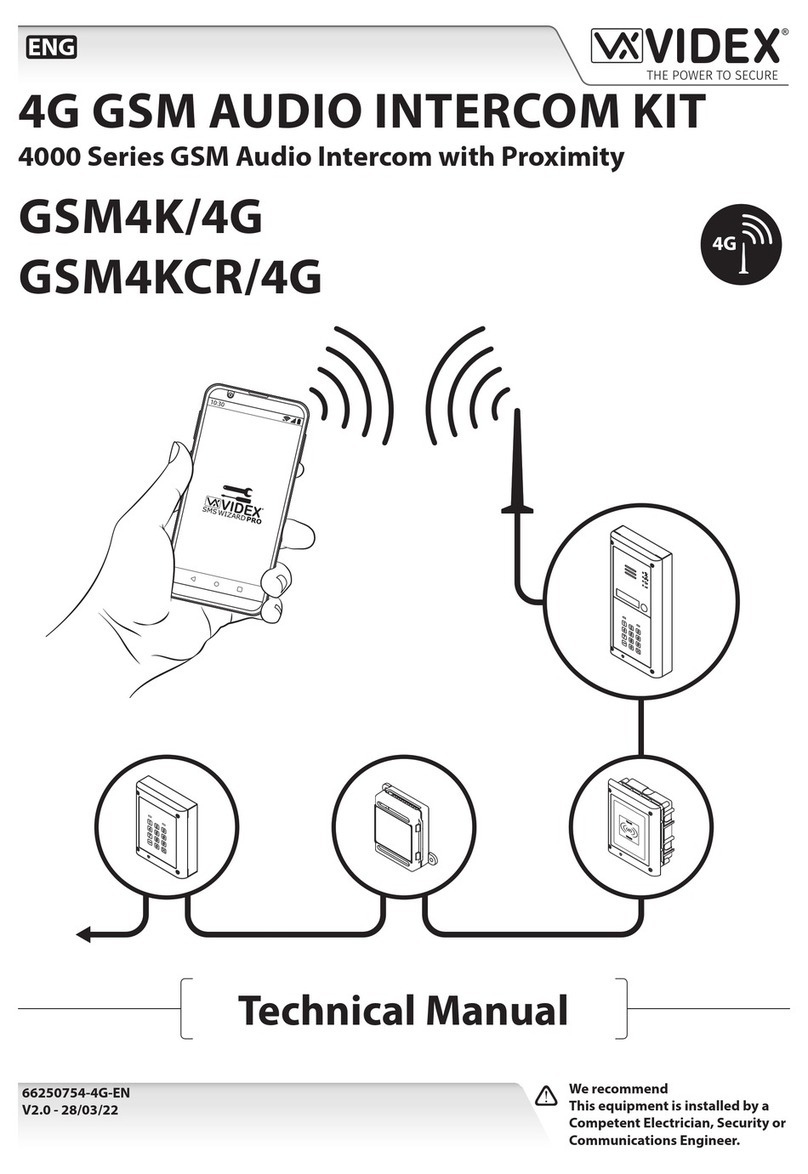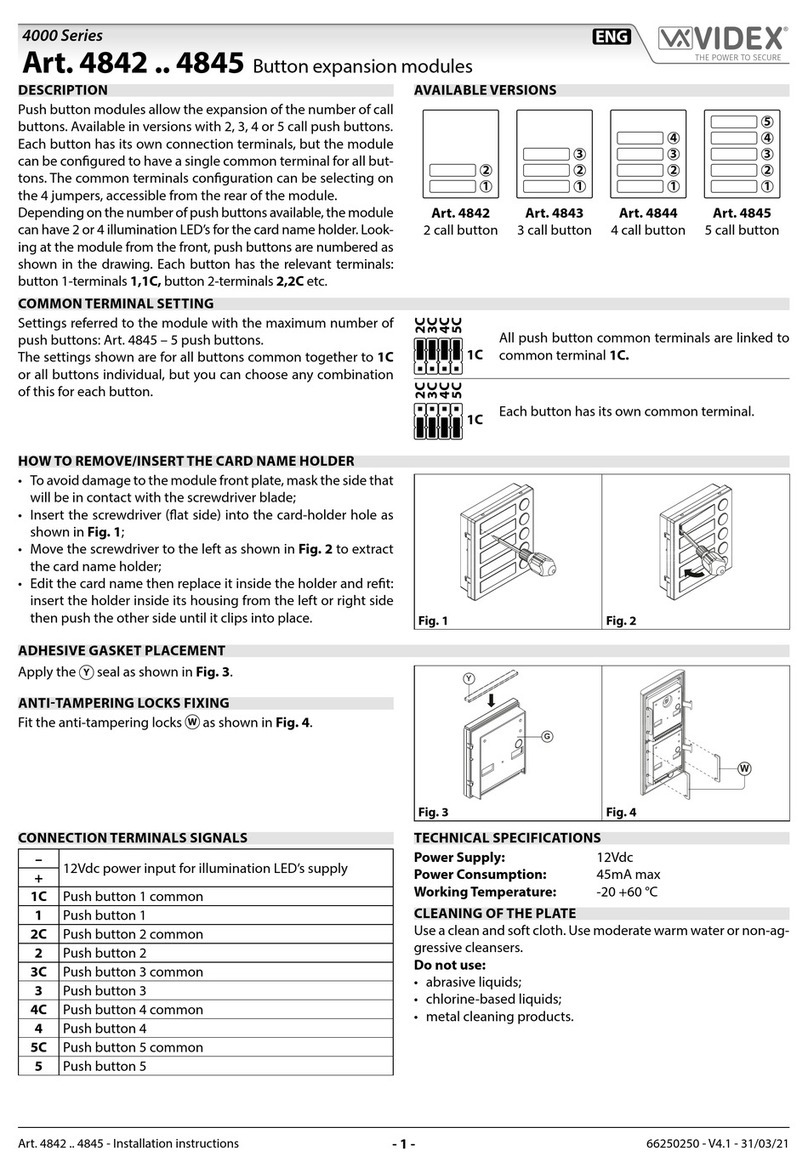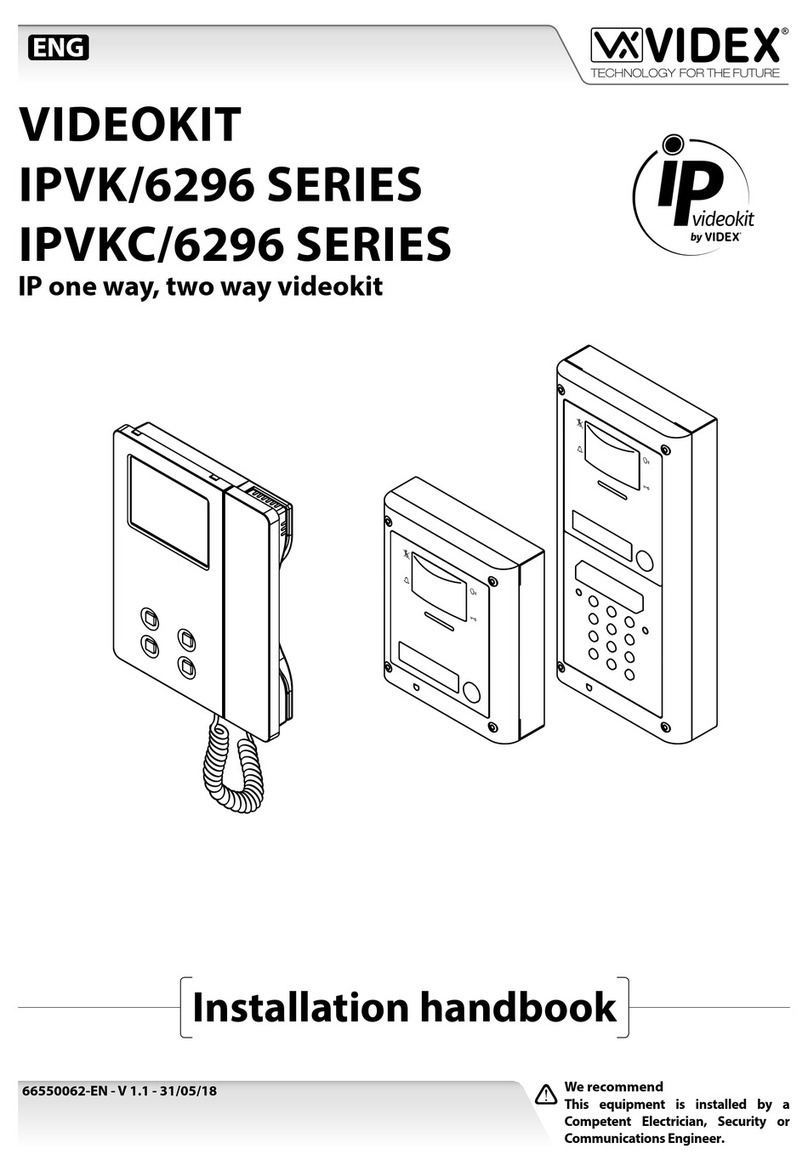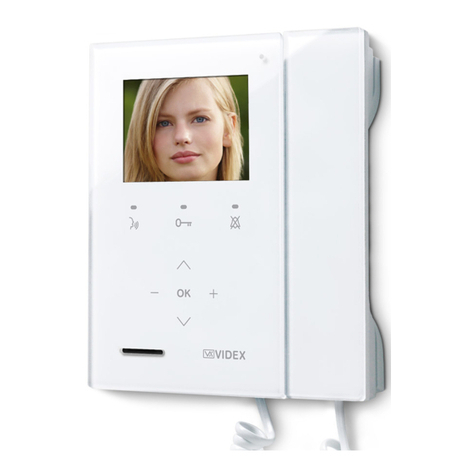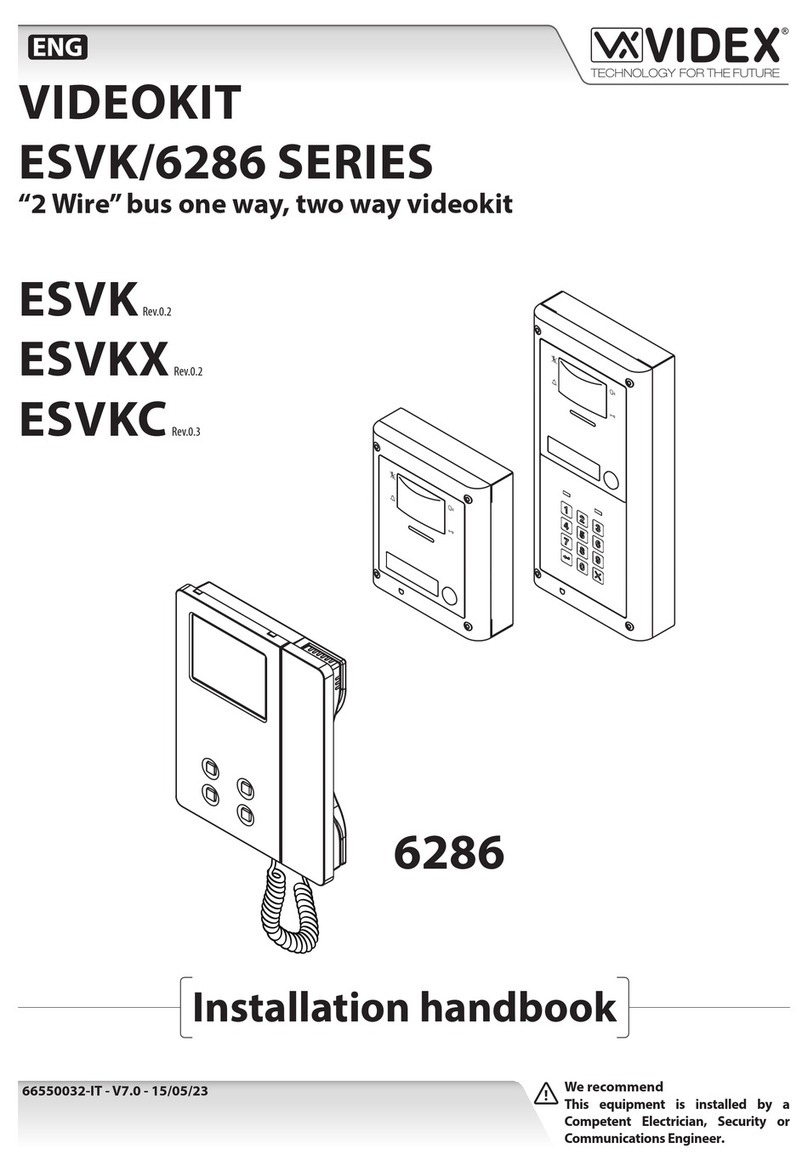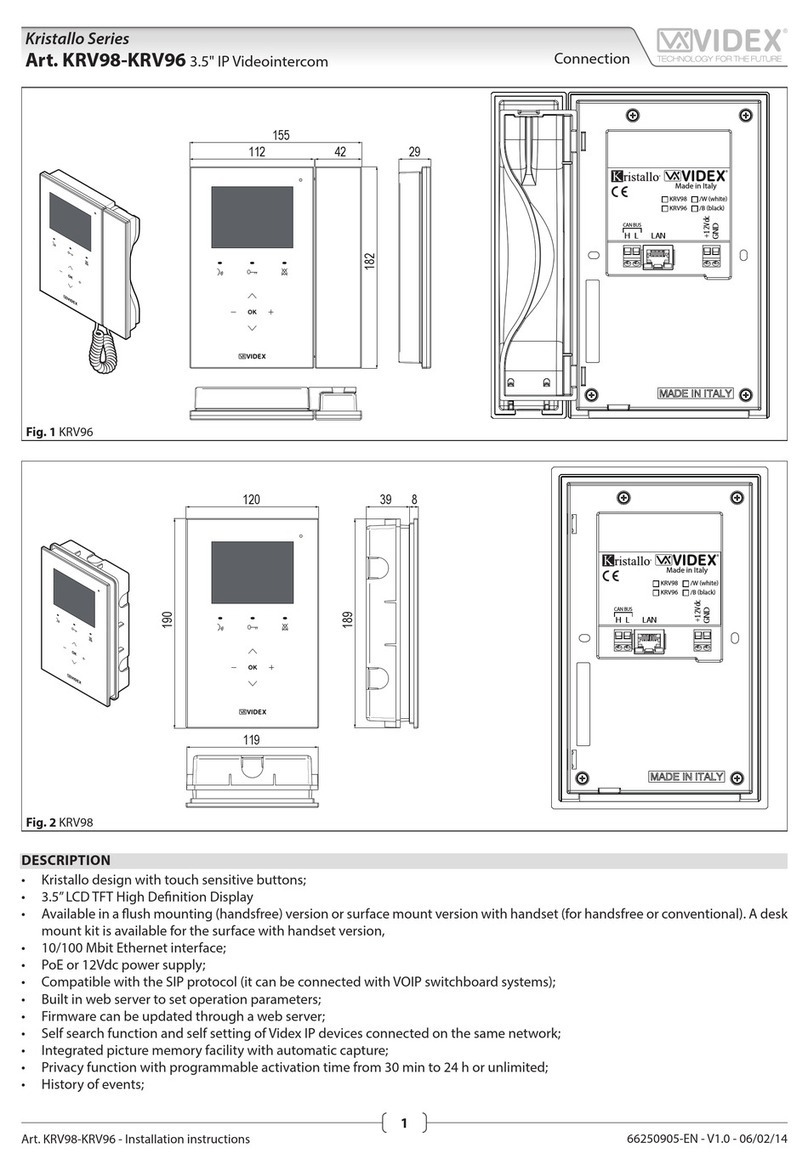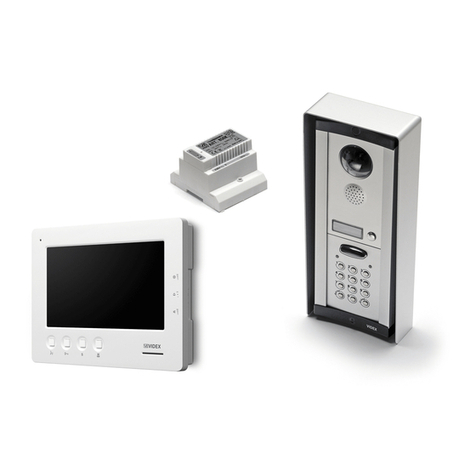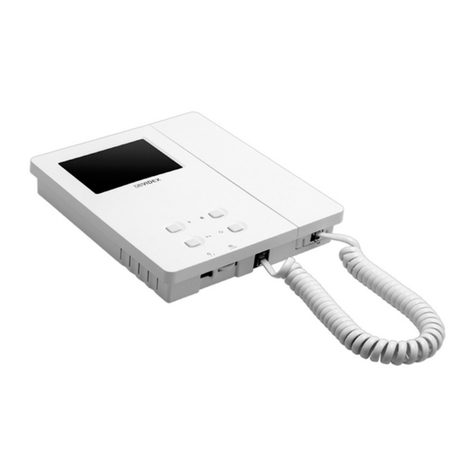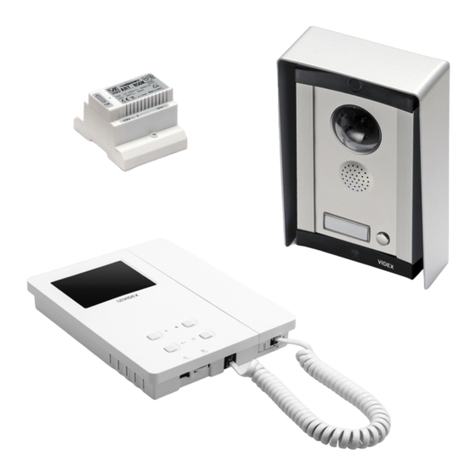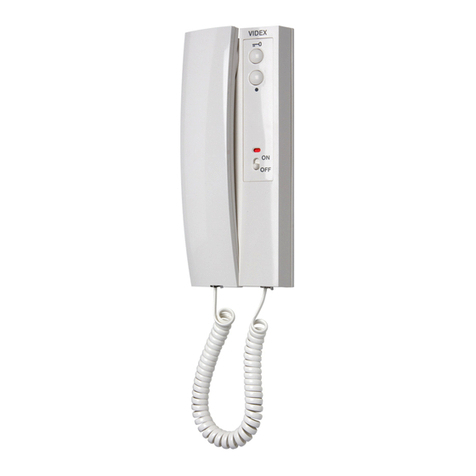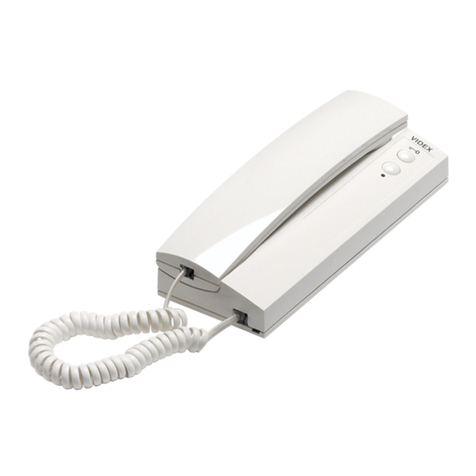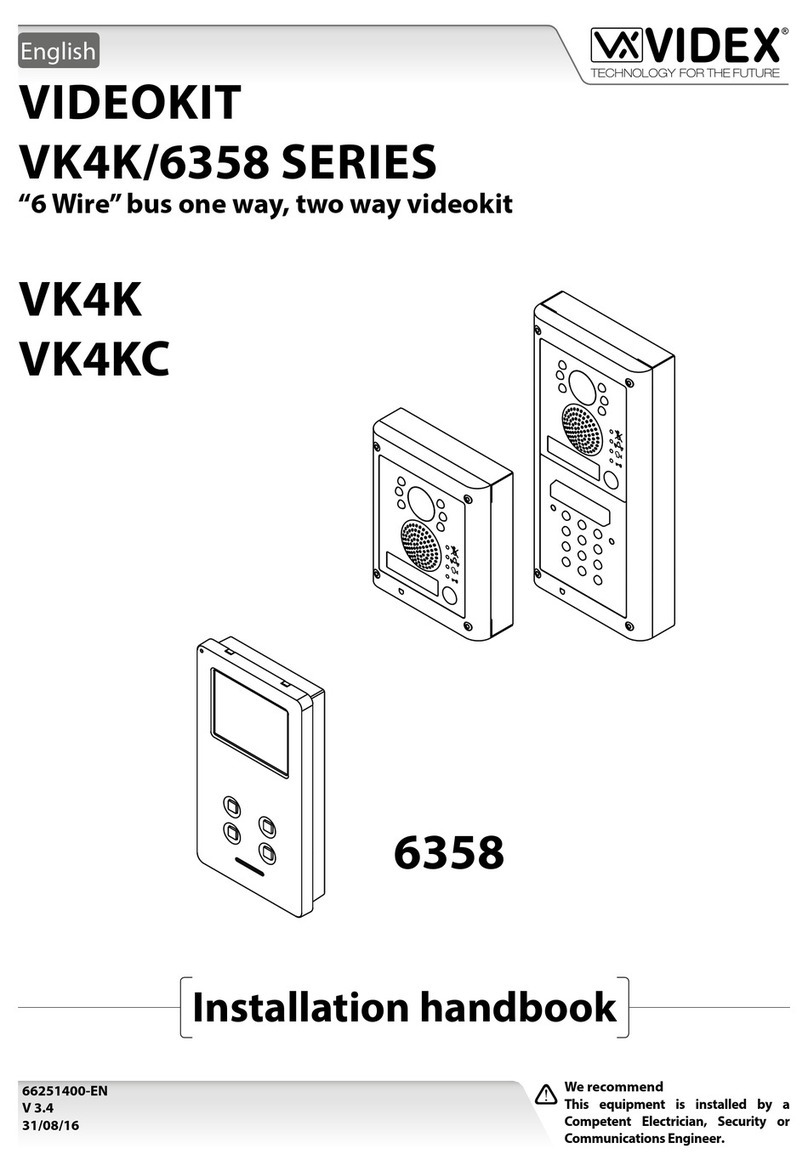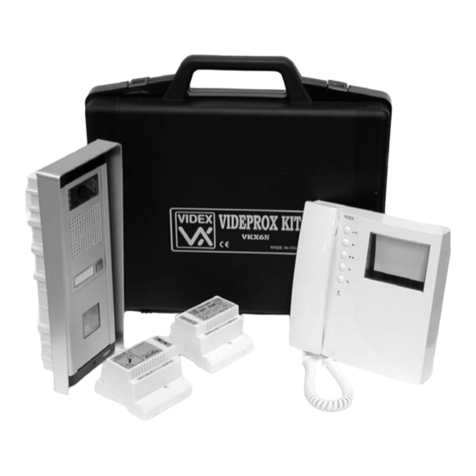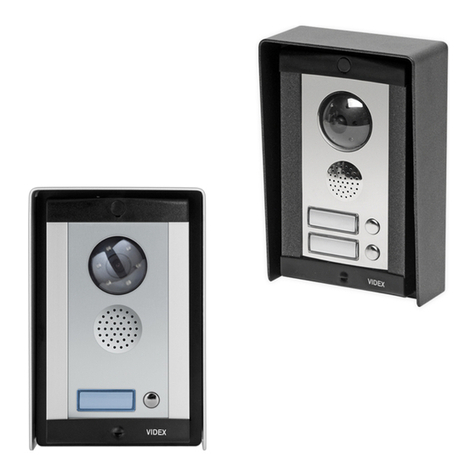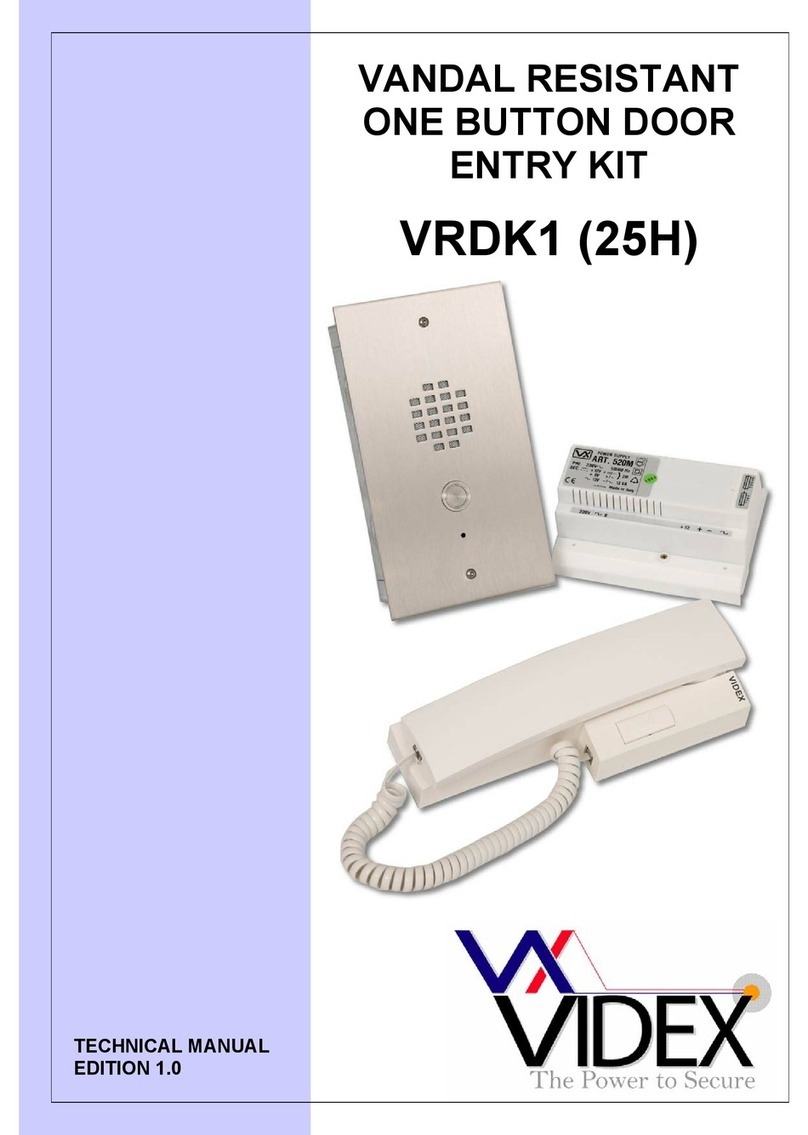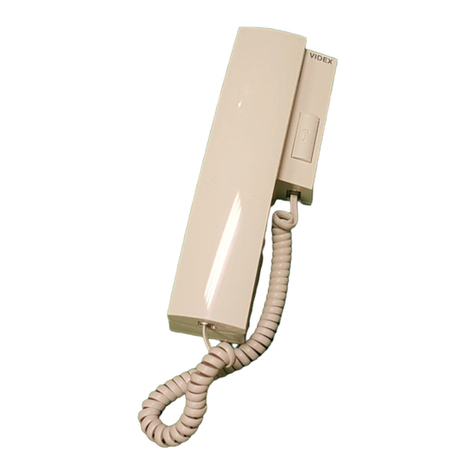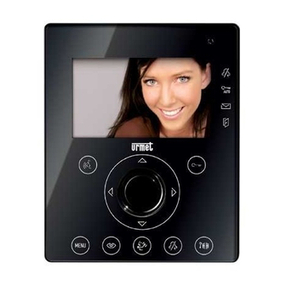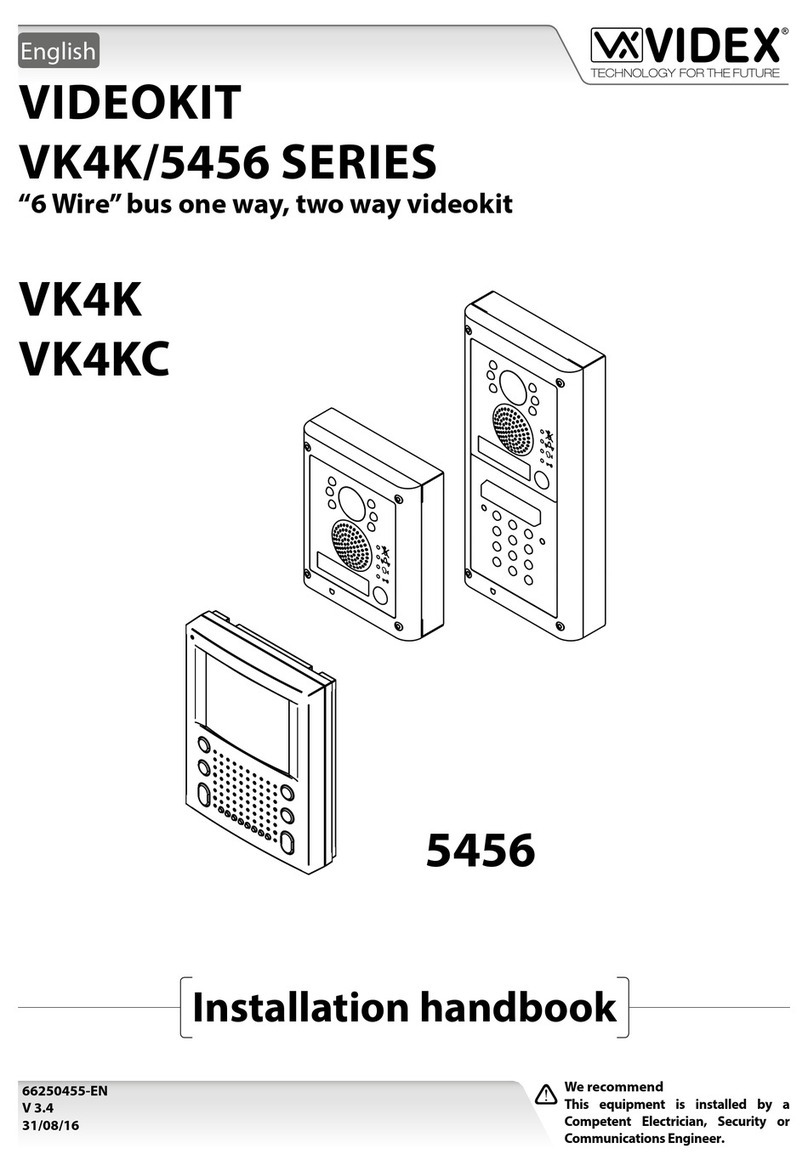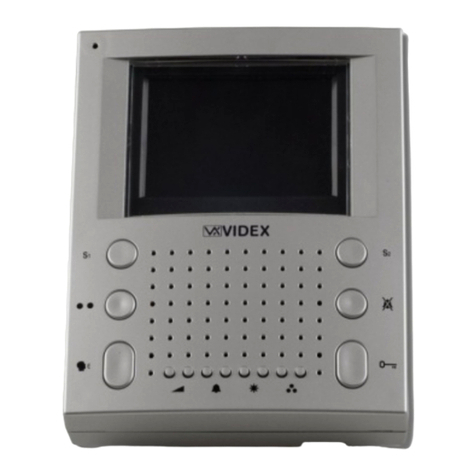
VIDEX ELECTRONICS S.p.A. VX2200 “2 WIRE” Bus Digital System
76
ART.VR5478/VR5178 VIDEOCITOFONO / CITOFONO
VIVAVOCE LINEA ANTI-VANDALO PER SISTEMI
VX2200
Descrizione
Videocitofono/Citofono viva voce “half duplex” con pulsante di risposta/fine
conversazione, pulsante “apri-porta” , pulsante “Privacy” (durata program-
mabile) e 3 LED* per indicare lo stato di conversazione in corso, lo stato
d’apertura/ chiusura della porta e lo stato di abilitazione/ disabilitazione del
servizio privacy. Regolazione del volume della nota di chiamata e
dell’altoparlante.
Pulsanti
Pulsante risposta / conversazione ad una via / autoaccen-
sione / spegnimento
Premere questo pulsante alla ricezione della chiamata per
avviare la conversazione con il posto esterno in full duplex
(il relativo LED si accende).
Premere e tenere premuto per più di un secondo alla rice-
zione della chiamata o durante una conversazione per inizia-
re la conversazione ad una via verso il posto esterno (il rela-
tivo LED lampeggia rapidamente): per ascoltare il visitatore
rilasciare il pulsante (il LED lampeggia lentamente) e pre-
merlo nuovamente ogni qual volta si deve prendere la paro-
la.
Premere brevemente durante la conversazione per spegnere
l’impianto. In ogni caso lo spegnimento è automatico allo
scadere del tempo di conversazione (il LED si spegne).
Ad impianto spento, premere il pulsante per effettuare
l’auto-accensione ed aprire la comunicazione verso il posto
esterno (il relativo LED si accende). Il numero di pressioni
del pulsante dipende dall’identificativo del posto esterno
che si vuole accendere
Pulsante Apri-porta
Premere durante la conversazione per aprire la porta
dell’ingresso dal quale proviene la chiamata. L’apertura del-
la porta viene confermata da un segnale acustico. Se il mor-
setto “DL” è opportunamente collegato, il relativo LED re-
sta acceso fino a quando resta aperta la porta.
Premere ad impianto spento per chiamare il centralino di
portineria VX2210 se presente nel sistema.
Pulsante Privacy on/off
Con il sistema in stand-by, premere per attivare il servizio
privacy per il tempo programmato: il relativo LED si ac-
cende a segnalare lo stato di attivazione del servizio.
All’arrivo della chiamata, con il servizio attivo, l’unità non
emette alcun segnale acustico. Il servizio si disattiva allo
scadere del tempo programmato o premendo nuovamente il
pulsante.
Durante la conversazione, se premuto per più di 3 secondi,
attiva l’uscita ausiliaria (il morsetto “open collector” “SB”
chiude verso massa).
Programmazioni e Regolazioni – VR5178
Le operazioni di programmazione e regolazione permettono di impostare il
numero di squilli, il tipo di suoneria ed il relativo volume, la durata della
privacy e il volume della fonia.
Ciascuna operazione è facilitata da segnali acustici e visivi.
Trascorsi 3 secondi di inattività una volta entrati in una delle funzioni di pro-
grammazione/regolazione, l’unità torna al normale funzionamento memoriz-
zando il relativo parametro.
Impostazione numero di squilli – VR5178
Con il sistema in stand-by, premere e tenere premuto (circa 10 secondi) il
pulsante “ ” fino a che il relativo LED inizia a lampeggiare e viene e-
messo un bip.
Premere tante volte il pulsante “ ” quant’è il numero si squilli (max 9)
che si vogliono programmare.
Raggiunto il numero di squilli desiderato (es. 5 pressioni per 5 squilli) at-
tendere (circa 3 secondi) senza premere nulla che il LED si spenga.
Il nuovo numero di squilli è memorizzato.
ART.VR5478/VR5178 HANDS FREE VIDEOMONITOR
/ INTERCOM VANDAL RESISTANT LINE FOR
VX2200 SYSTEMS
Description
Half duplex hands free videomonitor / intercom with buttons to control “an-
swer/end conversation”, “door open” and “privacy on/off” (programmable
duration). In addition there are 3 LEDs to indicate the status of “answer/end
conversation”, “door open/closed” and “privacy on/off” status. Call tone
and loudspeaker volume controls are also incorporated on this model.
Push buttons
Answer / simplex communicaiton / Camera Recall / End Call
push button
Press this button during an incoming call to open the
speech in duplex mode allowing free speech with the caller
in both directions (The related LED will illuminate)
Press and hold this button (more than 1 second), during an
incoming call or a conversation in progress, to allow the
user to answer a call from a visitor at the door station in
SIMPLEX speech mode (The related LED will flash rap-
idly): releasing the button will allow the user to listen to the
visitor (The LED will flash slowly). Press and hold the but-
ton when you talk to the visitor and release the button when
you listen to the visitor.
During a conversation, momentary operation of this button
will end the call. The LED next to the button will switch off.
The system will automatically switch off when the conversa-
tion time expires.
When the system is in standby, (No calls on the system) op-
eration of this button will open the speech to the door sta-
tion. The related LED will illuminate. Press as many time as
the ID value of the door panel to connect to.
Door Open Push Button
During a conversation, operation of this button will release
the door from where the call originated. This will be con-
firmed by an acoustic tone. If terminal “DL” is connected,
the “door open” LED next to the button will also be illumi-
nated.
When the system is in stand-by, a button press will book a
call to the concierge (If available)
Privacy on/off Push Button
When the system is in stand-by, press this button to enable
the service for the programmed time: the related LED will
illuminate to signal the service enabled. During an incom-
ing call, with the service enabled, the device does not emit
any acoustic signal. The service is disabled when the pro-
grammed time expires or pressing again the button.
During a conversation, if pressed for more than 3 seconds,
operates the auxiliary output (open collector terminal “SB”
linked to ground).
Programming and Adjustments – VR5178
Programming and adjustment action allows the setting of the number of
rings, the melody and the related volume, the privacy duration and the
speech volume.
Acoustic and visual signals are used to help the user during each program-
ming stage.
After 3 seconds of idle time once entered in one of programming/adjustment
function, the unit returns to normal operation storing the parameter related
to the function that was last selected.
VR5178 – How to setup the number of rings
When the system is in stand-by, press and hold the button “ ” until the
related LED starts flashing and the intercoms emit a beep.
Press the “ ” button as many times (each time is confirmed by a beep) as
the number of rings (max 9) required.
Once the number of rings is reached (i.e. press 5 times for 5 rings), wait
(approx 3 seconds) until the LED switches off.
The new number of rings is stored.
